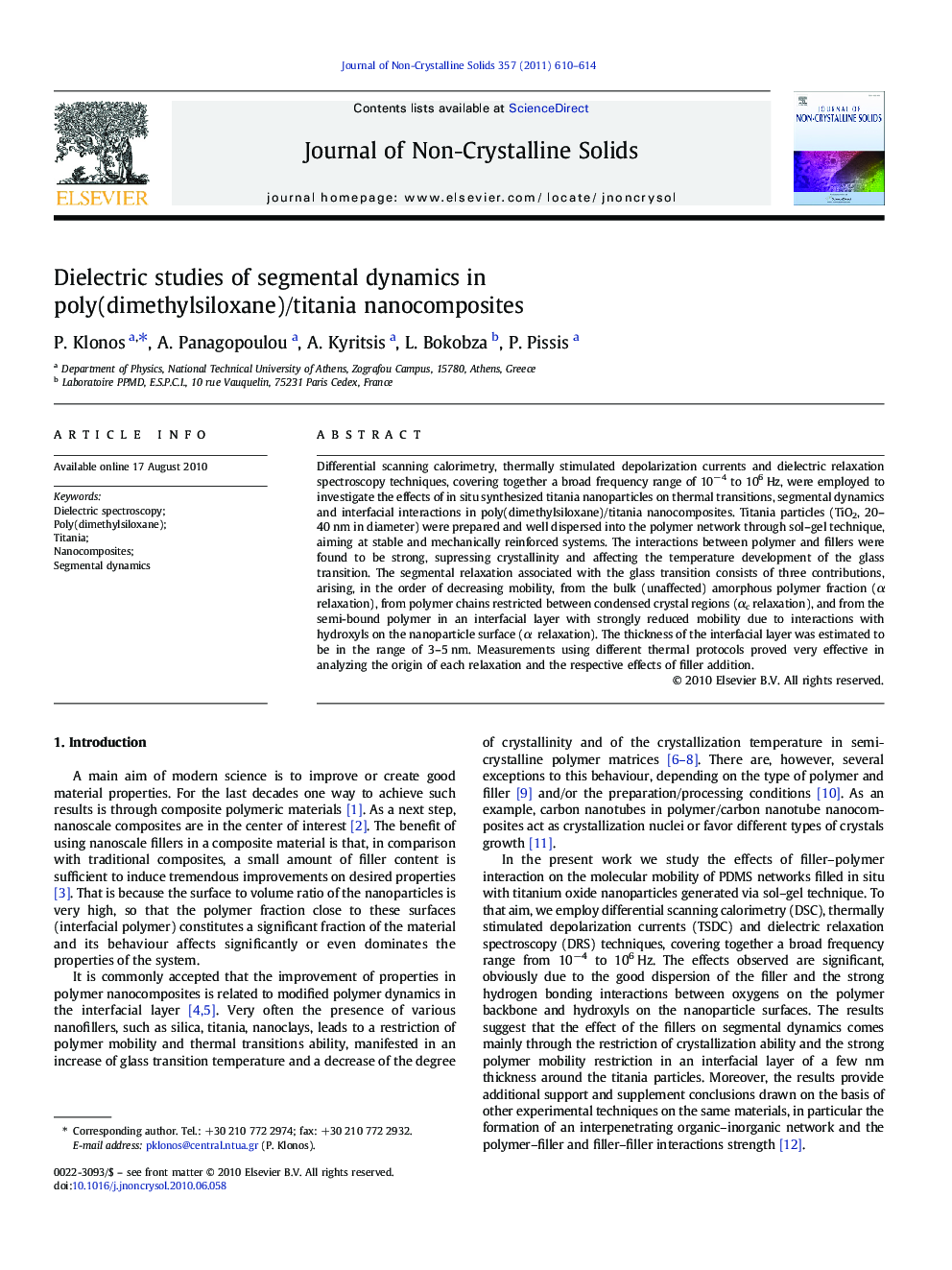| کد مقاله | کد نشریه | سال انتشار | مقاله انگلیسی | نسخه تمام متن |
|---|---|---|---|---|
| 1482160 | 991555 | 2011 | 5 صفحه PDF | دانلود رایگان |

Differential scanning calorimetry, thermally stimulated depolarization currents and dielectric relaxation spectroscopy techniques, covering together a broad frequency range of 10−4 to 106 Hz, were employed to investigate the effects of in situ synthesized titania nanoparticles on thermal transitions, segmental dynamics and interfacial interactions in poly(dimethylsiloxane)/titania nanocomposites. Titania particles (TiO2, 20–40 nm in diameter) were prepared and well dispersed into the polymer network through sol–gel technique, aiming at stable and mechanically reinforced systems. The interactions between polymer and fillers were found to be strong, supressing crystallinity and affecting the temperature development of the glass transition. The segmental relaxation associated with the glass transition consists of three contributions, arising, in the order of decreasing mobility, from the bulk (unaffected) amorphous polymer fraction (α relaxation), from polymer chains restricted between condensed crystal regions (αc relaxation), and from the semi-bound polymer in an interfacial layer with strongly reduced mobility due to interactions with hydroxyls on the nanoparticle surface (α΄ relaxation). The thickness of the interfacial layer was estimated to be in the range of 3–5 nm. Measurements using different thermal protocols proved very effective in analyzing the origin of each relaxation and the respective effects of filler addition.
Journal: Journal of Non-Crystalline Solids - Volume 357, Issue 2, 15 January 2011, Pages 610–614